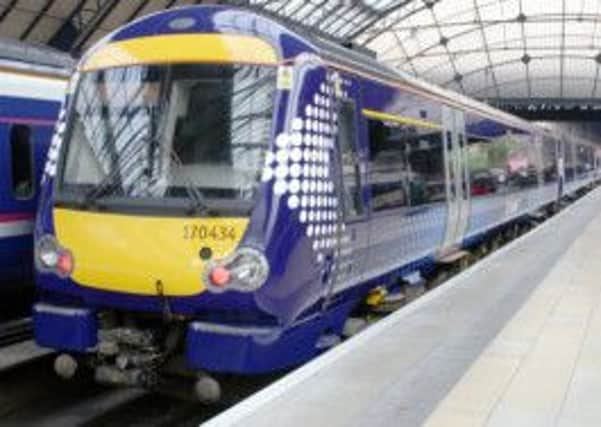Tavish Scott: Stop the cattle-like train treatment


When a topic of interest comes up, no matter how much you seek to tune out, it is the devil’s own job not to listen in. The discussion boiled down to why there are not enough seats on the Glasgow to Edinburgh express train. I tested this proposition with friends afterwards. Daily travellers highlighted the difference between the busy periods of the day with off-peak travel. At morning and evening rush hour, a six-coach train running every 15 minutes can struggle to provide a seat for all passengers.
But is this an everyday experience, and if so what is the solution?
Advertisement
Hide AdAdvertisement
Hide AdI doubt it is high-speed rail between Edinburgh and Glasgow. The journey is only 50 miles and averages 60mph. The ScotRail service runs every 15 minutes in both directions. The driver on a high-speed service would be slamming on the breaks before the train was half way there. High-speed rail works on long routes. Look at France or Japan. So, instead of press headlines, rather than real improvements for fare-paying passengers, government should concentrate on cutting existing journey times on routes where the train could beat the car.
Aberdeen, the oil capital of the UK, suffers from a ponderous rail service to the Central Belt. Aberdeen to Inverness is woeful. The Highland line south from Inverness is scenically stunning, yet desperately slow and the car journey wins hands down. So before further pronouncements on Glasgow to Edinburgh high-speed rail, the investment should be on faster times between Scotland’s other cities.
National figures show that the most overcrowded train anywhere is the 07.44 weekday morning Henley-on-Thames to London Paddington service, which carries 84 per cent more people than it was designed for. This level of overcrowding suggests we do treat people like cattle when it comes to transport. Except that is not so. Cattle are better off. European Union animal welfare rules mean calves and sheep must have at least 0.3m x 0.3m of space when being transported. The train industry is working on the assumption that a standing passenger needs a space of 0.25m x 0.25m on suburban services. Measure it. That is the equivalent of a sofa cushion. So a calf or a lamb is given more space than a passenger standing on an overcrowded commuter train.
Trains have been a victim of their own success. After years of decline, passenger numbers have steadily grown over the past decade. Since 1999, rail in Scotland has had sustained investment under different governments. That is a positive aspect to Scottish transport policy started under Labour’s Sarah Boyack, who was devolution’s first transport minister. The trick is ensuring enough seats on those busy and more expensive services that people need for work and the Edinburgh Book Festival.
• Tavish Scott is Liberal Democrat MSP for Shetland